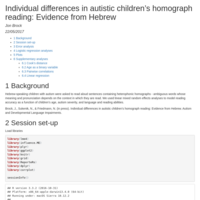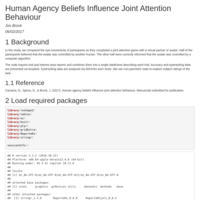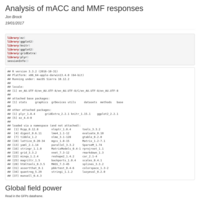Recently Published

Atypical brain responses to auditory spatial cues in adults with autism spectrum disorder
This code plots and analyzes data from an EEG study of auditory scene analysis in adults with autism.
We used the openxlsx package to import the pre-processed EEG data from a folder of excel workbooks and ggplot2 to plot event-related potentials for groups and for individuals. Topographic plots were made using the erpR package.
We performed analysis of variance of behavioural and EEG data using the ezANOVA function from the ez package.

Individual differences in autistic children’s homograph reading
Hebrew-speaking children with autism were asked to read aloud sentences containing heterophonic homographs - ambiguous words whose meaning and pronunciation depends on the context in which they are read. We used linear mixed random effects analyses to model reading accuracy as a function of children's age, autism severity, and language and reading abilities.

Human Agency Beliefs Influence Joint Attention Behaviour
In this study, we compared the eye-movements of participants as they completed a joint attention game with a virtual partner or avatar. Half of the participants believed that the avatar was controlled by another human. The other half were correctly informed that the avatar was controlled by a computer algorithm.
The code imports trial and interest area reports and combines them into a single dataframe describing each trial. Accuracy and eyetracking data are presented via boxplots. Eyetracking data are analysed via ANOVAs and t-tests. We use non-parametric stats to explore subject ratings of the task.

Visualization of data from Hazlett et al (2017)'s study of brain development in babies at high familial risk of autism
This accompanies my piece for the Head Quarters blog on The Guardian website.
The code plots data from Hazlett et (2017)'s study of brain growth in babies at high familial risk of autism.
In the first part I replot Figure 1 from the paper, which shows longitudinal growth curves. Animating the data shows more clearly the differences and overlap between babies who do vs do not receive an autism diagnosis.
The second part uses waffle plots to represent the outcome of machine learning techniques applied to the brain data to predict diagnostic outcome.

Analysis of mACC and MMF responses
Visualization and statistical analysis of two brain responses - the magnetic acoustic change complex and the mismatch field - measured using magnetoencephalography.